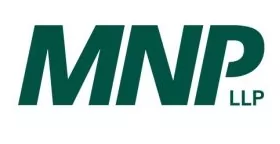One part of building a successful food and beverage business is establishing a strong brand.
A brand represents a business' image to customers and other stakeholders. It is a critical tool for identifying and differentiating a product and / or service. Attracting and retaining customers and communicating corporate values to customers, suppliers and employees.
Although determining the fair market value of a brand is not straightforward, a strong brand can add value to your business.
Below, we outline how a brand's fair market value is measured and calculated.
What Do We Mean By Brand?
A brand is the bundle of attributes that collectively form your business identity, including brand names, banner names, trademarks, logos, website and domain name, packaging designs / labels and advertising campaigns and slogans. These are all items that customers and other stakeholders associate with your product and / or service and business.
Benefits of a Strong Brand
In most successful businesses, a brand is a key component of overall intangible value (i.e. goodwill). A well-developed and recognizable brand can provide benefits such as higher profit margins through premium pricing, reduced advertising expenditures due to the high degree of established recognition, ease of introduction of new products under the existing brand banner, barriers to entry and competition and differentiation from the competition.
How Do You Calculate a Brands Value?
We typically calculate brand value using one or more of the following methods:
- Incremental profits – based on the future value of the incremental profits contributed by the brand through premium pricing and / or reduced advertising and other costs.
- Royalty relief – based on the costs avoided as a result of the ownership of the brand. What royalties would have to be paid to license the brand if it was not already owned by the business?
- Replacement cost – based on the costs that would be incurred to recreate the brand which are avoided as a result of the ownership of the brand. Costs include marketing consulting and design, legal, advertising and promotion, and so on.
Factors Influencing the Fair Market Value of a Brand
The following are examples of some of the qualities that influence the fair market value of a brand:
- Extent of customer recognition: Assessed based on empirical market research regarding brand awareness and the influence of the brand on the decision to purchase a product or service. In the food and beverage industry, there can be significant costs to develop customer brand recognition and awareness, which creates a significant barrier to the introduction of new products by competitors.
- Age / Longevity: How long has the brand been in existence and is its appeal fleeting or long-lived? A brand with an established history is more likely to retain customer recognition in the future. For example, Coca Cola, which was first introduced in 1886, is one of the oldest and most recognizable beverage brands in the world and is likely to endure into the foreseeable future.
- Associations: Is the brand associated in a positive manner with a historic or distinguished person (e.g. Laura Secord, Orville Redenbacher, Paul Newman), location or setting (e.g. Rainforest Café, Boston Pizza)? Conversely, the value of a brand can deteriorate when an association becomes negative, such as if a celebrity endorser becomes involved in a scandal.
- Leveragability or potential for expansion or exploitation: Can the brand be effectively used for new products or product extensions? For example, Arm and Hammer baking soda's brand attributes were leveraged to market an Arm and Hammer brand of toothpaste. Similarly, the trust and quality conveyed by the President's Choice brand was leveraged to create the financial services provider President's Choice Financial.
- Profitability: Does the brand contribute to profitability of the business through premium pricing or lower advertising costs? For example, Starbucks is often able to charge higher prices than many of its competitors because its brand is associated with a premium product and experience.
- Advertising: Highly advertised and promoted brands may have already achieved critical mass of recognition and are more likely to continue to retain or develop increasing levels of recognition.
- Protection: Are elements of the brand legally protected or can they be? For example, trademarks and logos can be legally protected, but great service associated with a brand cannot be.
Geographic Use: To what extent does (or would) the brand have cross-cultural, national or international use, or is its use more localized and limited? For example, a local microbrewery compared to an international brand.
Conclusion It takes time and resources to strengthen the brand of your food and beverage company. Being aware of the value drivers listed above and forming a brand strategy with your marketing team can contribute to an effective and highly valuable brand, which in turn adds strategic and financial value.
The content of this article is intended to provide a general guide to the subject matter. Specialist advice should be sought about your specific circumstances.

